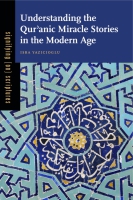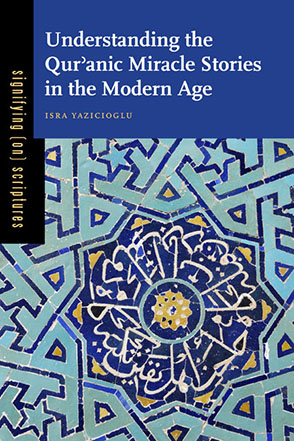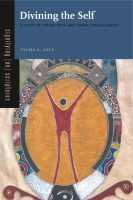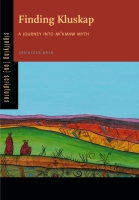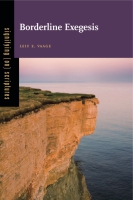Understanding the Qurʾanic Miracle Stories in the Modern Age
Isra Yazicioglu
“A significant contribution to our understanding of how and what scriptures signify.”
- Description
- Reviews
- Bio
- Table of Contents
- Sample Chapters
- Subjects
A distinctive contribution to a new trend in
Qurʾanic studies, this volume reveals the presence of insightful Qurʾanic interpretation outside of the traditional line-by-line commentary genre, engaging with the works of Ghazali, Ibn Rushd, and Said Nursi. Scholars of Islam, philosophy, and the intersection of science and religion will especially want to engage with Yazicioglu’s study.“A significant contribution to our understanding of how and what scriptures signify.”
“Yazicioglu’s monograph should and will be taken, in the years to come, as a reference point hard to be ignored in the interreligious and intercultural debate over the reconciliation of faith and science.”
“An intriguing study not only of the Qurʾan but also of the reception history of the sacred text in light of the challenge of rationalism. Isra Yazicioglu's work serves as a useful reminder of how intellectual trends in each era have shaped our interaction with divine revelation in a way that is timeless—and also timely.”
“An important book that brings miracle stories from Islam into conversation with philosophy. Isra Yazicioglu takes us on a journey through Ghazali’s defense of miracle stories—and she reframes those stories in terms of modern philosophy, beginning with Hume, developing with Peirce (who reminds us that natural laws are not absolute but who nevertheless recognizes regularities in nature), and ending with Nursi (for whom miracles invite us to rethink our assumptions about natural causation).”
“A lucidly written volume from which students of philosophy and theology as well as the informed general reader can benefit.”
“A most worthy and timely project, deftly executed and providing a valuable resource to anyone interested in how a range of philosophers, mediaeval and modern, have approached the miraculous.”
Isra Yazicioglu is Assistant Professor of Theology and Religious Studies at St. Joseph’s University.
Contents
Acknowledgments
Note on Transliteration
Introduction: The Qurʾanic Miracle Stories: A Puzzling Motif?
Part 1 A Medieval Muslim Debate
1 In Defense of a Literal Reading of Miracles: Ghazali’s Case for Contingency and Grace
2 A Cautious Approach to Miracle Stories: Ibn Rushd’s Case for Rationalism and Divine Wisdom
Part 2 Reframing the Debate on Miracles in Modern Terms
3 David Hume on Empiricism, Common Sense, and Miracles
4 Charles S. Peirce on Pragmatism, Science, and Miracles
Part 3 Contemporary Connections
5 Said Nursi’s Contemporary Reading of Qurʾanic Miracle Stories
Conclusion: Qurʾanic Hermeneutics in the Modern Age
Notes
Bibliography
Index
Introduction
The Qurʾanic Miracle Stories
A Puzzling Motif?
Moses said, “Pharaoh, I am a messenger from the Lord of all the Worlds, duty-bound to say nothing about God but the truth, and I have brought you a clear sign from your Lord.” . . . So Moses threw his staff and—lo and behold!—it was a snake, clear to all. . . . The leaders among Pharaoh’s people said, “This man is a learned sorcerer!”
—Qurʾan 7:104–9
This book was born out of a casual conversation that first puzzled and then intrigued me. Years ago, I was talking to one of my relatives, and the topic of the virgin birth story came up. My aunt made a remark that has stayed with me since. She said, “I believe in this miracle narrated in the Qurʾan, but I must admit that if a pregnant woman comes to me now and says, ‘No man touched me but I am pregnant,’ it will be very difficult for me to believe her.” I was taken aback. At first, I thought that such a remark simply missed the point. After all, even the most enthusiastic believers would not think that the story was about being incredulous of virginity claims, would they? Yet her comment was also intriguing: she was raising a crucial question about the actual implications of a cherished miracle story. What was such a miracle story really telling its reader? She was asking, in effect, “What does this text want me to do with it? If the point is to be gullible and give the benefit of the doubt to a pregnant woman who claims to be a virgin, I am afraid I will fail to do that.”
Obviously, such a question about implications can be raised for other miracle stories in the Qurʾan, in which various other figures—such as Noah, Abraham, Moses, Solomon, and Jesus—are presented as performing miracles. For instance, when Abraham is thrown into fire, the fire miraculously becomes “cool and safe” for him (Q. 21:69). Similarly, Jesus heals the blind and sick with his touch and revives the dead (Q. 5:110), while Moses’s staff goes through instant metamorphosis, becoming a snake, or performs unusual feats, such as parting seas (Q. 7:117–19, etc.). Likewise, Solomon understands the language of the birds (Q. 27:16), has miraculous means of transportation (Q. 34:12), and so on. These miracle stories are quite similar to biblical stories in content, though, of course, there are also some crucial differences, especially in the explicit emphasis placed on edification and the amount of detail (or rather the lack of it) provided in the Qurʾan.
Such miracle stories in the Qurʾan, and in the Bible, may sound strange to many of us in this day and age. It is often thought that one either believes in the historical accuracy of these stories or rejects them as figments of imagination. In fact, miracle stories are often viewed in popular culture as a clear case of the clash between faith and science. It is as if the readers of miracle stories divide into two exclusive camps—believers versus unbelievers, people of faith versus people of reason and science. Yet, as this Muslim woman’s remark shows, the picture is much more complicated than such a binary. Indeed, even for someone who believes a story to be factual, the question of what to do with its narration in the Qurʾan can remain. The aim of this book is precisely to engage with this oft-neglected question of what to do with these miracle stories.
To be sure, questioning the relevance of Qurʾanic miracle stories is not a uniquely modern phenomenon. In fact, during the very emergence, or the revelation, of the Qurʾan in the seventh century, such questions regarding prophetic narratives were raised by the opponents of Prophet Muhammad. They claimed that these stories were simply irrelevant stories of the ancients (asāṭīr al-awwalīn). In contrast, the Qurʾan insisted that these stories offered profound guidance for those willing to heed them. Believers also raised the question of what to do with these narratives. As the Qurʾanic reception history attests, in the centuries after Prophet Muhammad lived, generations of believers engaged with them. This book will offer a glimpse of the ways in which meaningful implications have been drawn from these apparently strange narratives, in both the premodern and modern eras.
This book, focused as it is on the case of miracle stories, also aims to go beyond these specific passages to reflect more broadly on the issue of interpretation of the Qurʾan. The case of miracle stories shows how seemingly irrelevant Qurʾanic passages can occasion the discovery of new horizons of meaning and practice—a hermeneutical tip that can be applied to other scriptural texts as well. In fact, this book is intended not only for readers interested in Qurʾanic interpretation but also for those interested in scriptural hermeneutics in general. The case of interpretation of miracle stories reveals once again that the relations between texts and their readers, reason and revelation, and faith and science are complex. In the process of interpretation, critical thinking and fidelity to the scriptural text are often much more intertwined than is often assumed.
By revealing the unexpected ways in which scriptural texts can elicit meanings and have repercussions for human life, this book contributes to the broader conversations about scriptural interpretation in the modern age. As part of the Signifying (on) Scriptures series at Penn State Press, it offers another compelling illustration of how the meanings of scriptures go beyond words on a page. That is, in order to appreciate the scriptural meanings, one needs to pay attention not only to their content but also to the ways in which they interact with human praxis, artifacts, and social dynamics.
As I alluded to earlier, the Qurʾan as scripture shares numerous similarities with other scriptures—especially with the Bible—that warrant extending the insights gleaned from its interpretation to them. However, there are also a number of features of the Qurʾan that make the task of interpreting its miracle narratives a distinctive challenge, as well as an opportunity. As is well known, the purported narrator throughout the Qurʾanic text is God, who is understood as addressing people through the “final human messenger,” Prophet Muhammad. These passages, which were revealed to the Prophet via the angel Gabriel over a period of about twenty-three years (610–32 C.E.), form a discourse that is quite unexpected for an ear attuned to biblical style. The Qurʾan does not follow a particular chronology: unlike the Old Testament or the Tanakh, it does not start with a creation story and move along a trajectory of salvation history. Nor does it offer a biography of Muhammad’s life or a story of his ministry, unlike the Gospels. The Qurʾan usually does not contain extended narratives either. While it mentions many of the figures who are also mentioned in the Bible—such as Adam, Noah, Moses, and Jesus—their stories are never told in one place. Instead, each of these figures appears and reappears throughout the text; snippet stories about each are presented elliptically and placed in an exhortational or prayer context. The story of Moses, for example, is told in more than fifty different places in the Qurʾan. Each instance provides an excerpt or an episode of Moses’s life and ministry and serves to illustrate central Qurʾanic themes, such as the oneness of God or belief in life after death. In addition to these distinct features in style, the Qurʾan presents us with a curious situation in the case of miracle stories. To clarify what I mean by that, I will first give a general background on the prophet stories in the Qurʾan and then focus on the theme of miracles within them.
One of the major claims of the Qurʾan is that the creator of the universe has spoken to humanity throughout time and across different lands. Starting with Adam and ending with Muhammad, countless prophets and messengers of God have been sent to disclose meaning of life and divine purpose to humanity (e.g., Q. 4:164, 40:78). These prophets and messengers are presented as exemplary human beings bearing a universal message that was reiterated in different vocabularies across the ages. The Qurʾan repeatedly notes that they were mere humans: they had needs for food, shelter, and security, they had desires, and they were mortal (e.g., Q. 3:114, 11:31, 12:24, 12:67, 25:20, etc.). The Qurʾan presents their humanity as an advantage rather than as a shortcoming. In response to those who demand a suprahuman messenger, the Qurʾan argues that human messengers can offer the best examples for people on earth (e.g., Q. 5:75, 15:20).
It is within these prophetic narratives that the Qurʾan talks about the miracles performed by these messengers—as signs given to them to support their mission. The Qurʾan is very clear that such miracles do not signify that the prophets are endowed with any superhuman qualities. Rather, it is God who enables the prophets to perform the miracles at specific times during their mission and, at times, to their own surprise (e.g., Q. 19:8, 27:10). Thus, for instance, the following verse narrates Jesus’s miracles with a clear emphasis on God’s will as the agent behind them: “[Jesus said:] I have come to you with a sign from your Lord: I will make the shape of a bird for you out of clay, then breathe into it and, with God’s permission, it will become a real bird; I will heal the blind and the leper, and bring the dead back to life with God’s permission” (Q. 3:49, italics added).
The Arabic term for miracle, muʿjiza, comes from the root ʿajaza (to be overwhelmed) and literally means that which overpowers, overwhelms, and paralyzes. The traditional Islamic theology has come to define the term “miracle” as the event by means of which a prophet of God overwhelms his opponents. As we shall see in the next chapter, a “miracle” in the traditional discourse was considered to be a change in the normal course of nature, which served as a confirmation of the sincerity of God’s messenger before his audience. While the classical discourse, quite justifiably, referred to Qurʾanic miracles with the term muʿjiza and defined it primarily within the context of a prophet’s ministry, the term itself is not used in the Qurʾan. The term used for miracles in the Qurʾan is āya, meaning literally “a sign.” The Qurʾan refers to different “signs” of God in nature and lays different emphasis on each. There are signs that are natural, such as the rain, the blossoming of the spring, or the growth of a human being in the womb. There are also signs that are unusual, though still natural, such as earthquakes and droughts. Finally, there are “supranatural” signs—the miracles—“that are apparently against the course of nature.”
According to the Qurʾan, one of the excuses that Muhammad’s contemporaries gave for rejecting his mission was that they wanted to see a supernatural event, a miracle, confirming his sincerity:
They say: “We will not believe for you [Muhammad] until you make a spring gush out of the ground for us; or until you have a garden of date palms and vines, and make rivers pour through them; or make the sky fall on us in pieces, as you claimed will happen; or bring God and the angels before us face to face; or have a house made of gold, or ascend into the sky—even then, we will not believe in your ascension until you send a real book down for us to read.” (17:90–93, also see 6:8–10, 52:44–45, 6:33–35, etc.)
The Qurʾanic response to such a demand is very interesting and instructive. First, it highlights the real task of the prophet. He is not meant to be a wonderworker; rather, he is merely a human being whose duty is to convey a message revealed to him, inviting people to recognize their one God: “Say, ‘Glory to my Lord! Am I anything but a mortal, a messenger?’” (Q. 17:93); “Say, ‘I am only a human being, like you, to whom it has been revealed that your God is One’” (Q. 18:110). The message that the messenger brings is a sufficient sign in itself, validating the truthfulness of the messenger who proclaims it. In fact, the Qurʾan describes itself—the very revelation of this enlightening message to an “unlettered” man—as a sign that points to God (Q. 2:23, 17:88, etc.). The Qurʾan repeatedly challenges its audience to produce such a discourse on their own: “If you have doubts about the revelation We have sent down to Our servant, then produce a single sura like it—enlist whatever supporters you have other than God—if you truly [think you can]” (Q. 2:23). And in a provocative way it reframes the challenge: “Say [Muhammad], ‘Even if all mankind and jinn came together to produce something like this Qurʾan, they could not produce anything like it, however much they helped each other’” (17:88; see also 10:38, 11:13, 52:33–34).
At other times, the Qurʾan responds to the demands for a supernatural event by noting that previous people often did not believe even when they saw miracles (Q. 5:110, 10:75–77, 17:59, 27:10–13, etc.). As Fazlur Rahman put it, it seems that the Qurʾan deems miracles as almost “out of date.” The disbelievers will still not believe even if they see the miracles they demand: “Even if We had sent down to you [Prophet] a book inscribed on parchment, and they had touched it with their own hands, the disbelievers would still say, ‘This is clearly sorcery’” (Q. 6:7). Similarly, “even if they saw a piece of heaven falling down on them, they would say, ‘Just a heap of clouds’” (Q. 52:44).
Finally, the Qurʾan responds to the demands for miracles from Muhammad by citing natural phenomena. The idea is that nature contains sufficient evidence for the central claims of the Qurʾan, namely the reality of God and life after death. Indeed, the term the Qurʾan uses for miracles, āya, is the same term used for natural phenomena (e.g., Q. 2:264, 7:107–8, 13:3, 16:65–72, 29:42, 30:20–27, etc.). The Qurʾan repeatedly talks about natural processes—such as the rain, wind, stars, sun, moon, grains, fruits, growth of an embryo, production of milk and honey, sailing of ships on water, variety of human races, and so on—as signs, āyāt, that disclose a transcendental source of mercy, power, and wisdom. For instance, “In the creation of the heavens and earth; in the alteration of night and day; in the ships that sail the seas with goods for people; in the water which God sends down from the sky to give life to the earth when it has been barren, scattering all kinds of creatures over it; in the changing of the winds and clouds that run their appointed courses between the sky and earth: there are signs [āyāt] in all these for those who use their minds” (Q. 2:164, italics added). The presentation of natural phenomena as signs of God is actually a major theme in the Qurʾan; nature is “the prime miracle of God, cited untiringly.”
The Qurʾan claims that these “natural signs” are visible and clear, and yet one still needs to be trained in order to recognize them. Just as an illiterate person can see a piece of writing clearly but will not be able to read it until he is taught how to read, the signs of God in the world become intelligible only through the teaching of the prophets. Indeed, according to the Qurʾan, deciphering the signs of God in nature is the very function of the revelation. Hence, the Qurʾan employs the same word, āya, not only for natural events and miracles but also for the message proclaimed by messengers of God. The “signs” or “verses” of the revelation recited by the prophets disclose the “signs” in the universe.
To be sure, the Qurʾan is explicit about the relational aspect of signs of God. Despite the clarity of the signs of scripture and signs in nature, these will be signs only in relation to someone who is open to considering them as such. If one refuses to consider them, the signs cannot force themselves on that person: “However eagerly you may want them to, most men will not believe [in this message]. You ask no reward from them for this: it is a reminder for all people and there are many signs [āyāt] in the heavens and the earth that they pass by and give no heed to” (Q. 12:103–5, italics added). From a Qurʾanic perspective, the relational aspect of the sign does not make the sign less powerful. As Rahman put it, “The signs do not become subjective . . . because many do not ‘see’ them, any more than the sun becomes subjective because animals habituated to darkness cannot see it.”
By stating that previous people did not believe despite seeing miracles, and by arguing that the natural world is more worthy of being used as evidence for faith, the Qurʾan offers a critical response to the demand for miracles. So the question remains: If natural phenomena and the revelation of the Qurʾan to the gentile Prophet are sufficient as signs of God, why narrate miracle stories about ancient prophets at all?
One way that the traditional Muslim scholars made sense of the apparently puzzling juxtaposition of the miracle stories about ancient prophets and the de-emphasis on miracles in Muhammad’s case was through appealing to the differing needs of different audiences. They maintained that the major miracle of each prophet was tailored to the needs of his times. Thus, for instance, they believed that God gave Prophet Moses miracles that would outdo magic because in his time people were interested in magic, and the sorcerer was the priest of the Egyptian religion during that period. Similarly, Prophet Jesus was given healing miracles because in his time medicine was held in high regard. The idea was that if a people were good at some skill, they would be able to recognize when a prophet surpassed that skill through a miracle. Hence, when the sorcerers of Pharaoh saw Moses perform a miracle, they immediately knew—being the experts in their field—that his feat was something qualitatively different than what could be achieved through magic (see Q. 7:106–22, 26:41–48). As for Prophet Muhammad, the traditional view maintained that he was given the Qurʾan as a miracle of eloquence since his very first audience in seventh-century Arabia highly valued eloquence. Indeed, as is well known, Muhammad “recited to an audience that had developed one of the most finely honed and scrutinizing tastes in the history of expressive speech.” Moreover, according to the traditional view, the Qurʾan was an appropriate miracle for the final prophet of God, whose audience was to continue until the end of time. Thus, unlike the supernatural events gifted to earlier prophets, God granted Prophet Muhammad the Qurʾan as an “ongoing miracle.” That is, the Qurʾan was a sign that could be witnessed by generations who lived after the prophet until the end of the world.
This traditional account explains how it could be justified within the Qurʾanic perspective that physical miracles were not central to Muhammad’s mission. It does not quite address, however, what the audience of the Qurʾan is to make of the miracle stories in the Qurʾan. To be sure, it has been often suggested that the miracle stories indicate God’s power and thus induce the reader to have awe of God and heed the message of the prophets. Yet such an interpretation must still respond to a crucial question: How does the narration of a miracle count as evidence of God’s power? In other words, what the audience of the Qurʾan witnesses is a miracle story being narrated; the reader does not actually witness the miracle itself. Unlike the Qurʾanic discourse about signs of God in nature or in scripture, which can be immediately accessed (or questioned) by turning our attention to the natural events or the text itself, the Qurʾanic mention of miracles does not seem to be open to such an encounter for the reader. The sign of such miracles is, rather, inaccessible for direct witnessing. Given that the Qurʾan clearly acknowledges that it is not addressing bygone communities in the pre-Muhammad period (see Q. 3:44, 11:49, 11:100, 12:102), why would it narrate these stories repeatedly for a people who would never see them? Could there be a deeper significance than merely reporting past events? Since the Qurʾan repeatedly presents itself as offering guidance (Q. 2:2, 2:185, 3:138, 10:57, 16:64, etc.), it is fair to wonder about how these miracle stories serve its purposes of edification.
Not surprisingly, such questions about the relevance and the significance of miracle stories in the Qurʾan did not go ignored in the Muslim tradition, and the reception history contains some remarkable engagement with them. This book intends to offer some of the poignant examples of this engagement, without any claim to exhaust them. (For instance, a noteworthy genre that unfortunately does not receive sufficient elaboration in this book and deserves a separate study is Sufi exegesis of the Qurʾanic miracles.) In each of the following chapters of this book, we shall encounter a crucial thinker whose approach to miracle stories will contribute to our search for their potentially relevant implications. In every chapter, I shall first introduce an interpreter and then turn to the ways in which he probes the meaning of miracle stories.
At the center of our interpretive venture will be a lively medieval debate that was occasioned by Qurʾanic miracle stories. Chapter 1, entitled “In Defense of a Literal Reading of Miracles: Ghazali’s Case for Contingency and Grace,” forms the first thread of the debate. It discusses how Ghazali, the famous medieval Muslim theologian and mystic, makes a compelling case for reading the Qurʾanic miracle stories literally. With impressive philosophical acumen, he challenges the rationalistic and necessitarian assumptions about natural causality and concludes that Qurʾanic miracle stories can be read literally without any logical contradiction. This chapter also discusses Ghazali’s theory of Qurʾanic interpretation, highlighting that Ghazali is not a thoroughgoing literalist in his approach to the Qurʾan and argues for the need to read the text metaphorically when it seems to clash with logic. Furthermore, Ghazali does not always consider miracles as strong proofs for faith; some of his remarks strikingly parallel the Qurʾanic criticism of the need for miracles. Given all these caveats, his insistence on a literal reading of miracles is intriguing: What is at stake for Ghazali in defending the literal interpretation of miracle stories? We discover that crucial implications are concealed beneath it. It turns out that his insistence on upholding the plain sense of miracle stories bears the fruit of a profound existential attitude toward life. Moreover, it brought about a breakthrough in medieval thought that would later form the backbone of our modern epistemology and science.
In chapter 2, “A Cautious Approach to Miracle Stories: Ibn Rushd’s Case for Rationalism and Divine Wisdom,” we encounter Ghazali’s opponent Ibn Rushd, the famous twelfth-century Muslim philosopher and jurist. Ibn Rushd strongly disagrees with Ghazali’s contention that the current natural order is contingent and that natural causality may be interrupted on certain occasions. He defends Aristotelian rationalism and realism, arguing that natural causality is a self-evident logical relation that cannot be suspended even in the case of miracles. He also finds Ghazali’s approach theologically misled. For Ibn Rushd, admitting the contingency of natural order would undermine the appreciation of the profound wisdom in natural order, making any reference to divine wisdom meaningless. In this chapter, I also analyze Ibn Rushd’s theory of Qurʾanic interpretation. Ibn Rushd draws a distinction between different classes of Qurʾanic readers, and while he allows a literal reading of miracles for the common person, he suggests that a literal interpretation would not be permissible for a nuanced philosopher. Through Ibn Rushd’s resistance to miracle stories, we witness a very different practical implication drawn from the very same texts. Unlike Ghazali, Ibn Rushd sees a real danger in reading miracle stories in the Qurʾan literally. He is worried about subversive readings that might lead to a disruption of common sense and scientific inquiry. Thus, Ibn Rushd’s approach is very instructive about what these narratives may not imply, if we are to take the scripture seriously.
Having observed how interpretation of Qurʾanic miracles occasioned such profound discussions about nature as well as human experience in the case of this medieval Muslim debate, the book will then make a surprising detour into modern thought. For even though engaging with the relevance of Qurʾanic miracle stories is not an exclusively modern phenomenon, the contemporary age provides a new context that cannot be ignored. Modern successes in predicting and controlling natural processes both challenge and enrich the discussion of scriptural miracle stories. On the one hand, there is the challenge aptly voiced by David Weddle: “Why should anyone, living at the dawn of the twenty-first century, be interested in miracles?” In this day and age of science and technology, in which we know how to describe various natural processes in detail and utilize them for human benefit, such stories simply seem obsolete. At the same time, these stories are less strange today: after all, we now read the virgin birth story in an age of reproductive technology, in which some babies are indeed conceived outside of the usual sexual intercourse. Thus, a reading of Qurʾanic miracles in the modern age inevitably takes place against the background of, among other things, scientific and technological leaps, as well as the many Enlightenment philosophical notions attached to them. Our detour into early and late modern Western thought, surprising as it may well be, will therefore prove extremely useful.
This section of the book, “Reframing the Debate on Miracles in Modern Terms,” turns to David Hume (1711–1776) and Charles S. Peirce (1839–1913), both of whom introduced drastic changes in the way Western philosophy conceived of the natural order and also displayed very interesting attitudes toward miracle narratives. Attention to their insights enables us to reframe the medieval Muslim debate over miracle stories in modern terms and facilitates an appreciation of what is at stake in a contemporary reading of Qurʾanic miracles.
Chapter 3, “David Hume on Empiricism, Common Sense, and Miracles,” discusses Hume, whose empiricist and agnostic approach has had a crucial impact on modern thought, both in epistemology and in philosophy of religion. Hume’s position as an early modern thinker reflects an interesting combination of Ghazali’s and Ibn Rushd’s approaches to Qurʾanic miracles. His renowned challenge to rationalist assumptions about natural causality effectively affirms Ghazali’s break from Aristotelian rationalism through the defense of miracles, and it leads to a defining moment for modern thought. However, unlike Ghazali, Hume also argues against miracle stories in his famous A Treatise on Miracles. His surprising insistence that miracle reports should not ever be taken seriously is reminiscent of Ibn Rushd’s plea for science and rationality in his own response to Ghazali. Embodying, as it were, Ghazali’s and Ibn Rushd’s diverging concerns in an early modern context, Hume’s stance helps us raise the crucial question of whether one could have it “both ways.” Could one take miracle stories seriously, as Ghazali insightfully did, and yet resist their subversive readings, which Ibn Rushd worried about? Could a fallible epistemology, which recognizes that there is nothing logically necessary about current natural order, escape skepticism and make room for science? To this call, we find a response in the thought of a late modern scientist and philosopher.
Chapter 4, “Charles S. Peirce on Pragmatism, Science, and Miracles,” discusses how Peirce, as a scientist and a thinker, offers an interesting reconciliation of the challenges and promises that lurk behind miracle stories. On the basis of his scientific training and his commitment to experience, Peirce makes room both for a fallible epistemology (in the style of Ghazali and Hume) that concedes the contingency of natural order, and for realism (as did Ibn Rushd and Hume). That is, his scientific approach suggests that natural laws cannot be regarded as absolute (as miracle stories may provocatively remind us) and also recognizes that regularities in nature are real rather than merely imagined by the human mind (hence such stories cannot be read in a way that undermines common sense and science). Peirce also traces a scientific implication of miracle stories: they alert the scientist to be open to unprecedented possibilities in her inquiry.
Bolstered with insights from the medieval Muslim debate and modern Western discussions about miracle stories, we then turn to contemporary reception in the final chapter, entitled “Said Nursi’s Contemporary Reading of Qurʾanic Miracle Stories.” Nursi (1877–1960) offers an insightful illustration of how these narratives could be read in relevant ways in the modern age. His hermeneutics of the Qurʾan is significant in that he insightfully focuses on the implications of the sacred text for a believer. His work fruitfully responds to our question of “what to do” in response to the Qurʾan. According to Nursi, anything in the Qurʾan has a message relevant for any believer in any age, and miracle stories are no exception. In Nursi’s interpretation, not only are Ghazali’s and Ibn Rushd’s divergent insights reconciled, but the apparent contradiction between the natural and the miraculous in the Qurʾanic discourse turns out to be a profoundly meaningful motif. Given that Nursi is such an understudied and relatively unknown figure in current Qurʾanic studies, and that his approach offers an exemplary culmination of the issues that will emerge in our interpretive journey, I will spend a bit more time on his work.
In sum, this book will illustrate how raising the question of “So what?” in response to the Qurʾan and its reception history can uncover surprising insights. The venture into miracle stories sampled in this book will complicate the simplistic images of conflicts between faith and reason, and science and scripture. It shall disclose how seemingly intractable tensions between reason and revelation can give way to enriching and complementary perspectives on human existence, nature, and science. Indeed, under this hermeneutical lens, which we might label—inspired by Peirce’s pragmatism, which is quite different from popular notions of pragmatism—“pragmatic hermeneutics,” apparently dead or irrelevant scriptural texts can quicken to a life of meaning and relevance, just as Moses’s dead staff turned into a lively serpent!
Also of Interest
Mailing List
Subscribe to our mailing list and be notified about new titles, journals and catalogs.
